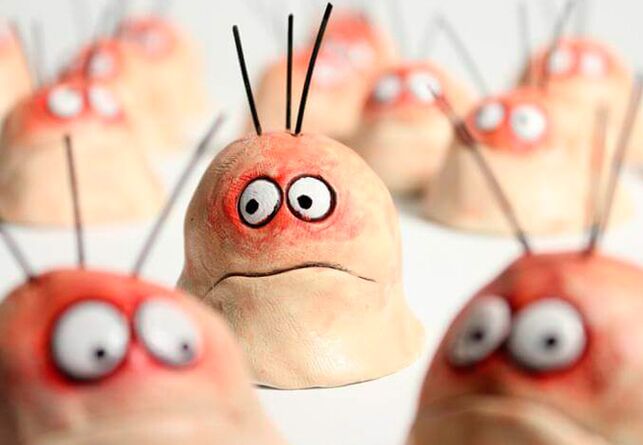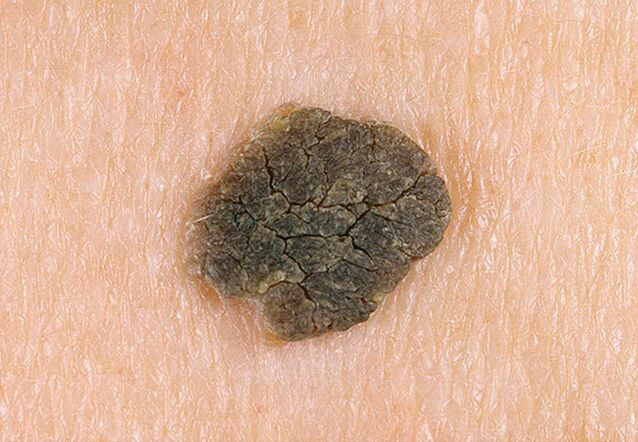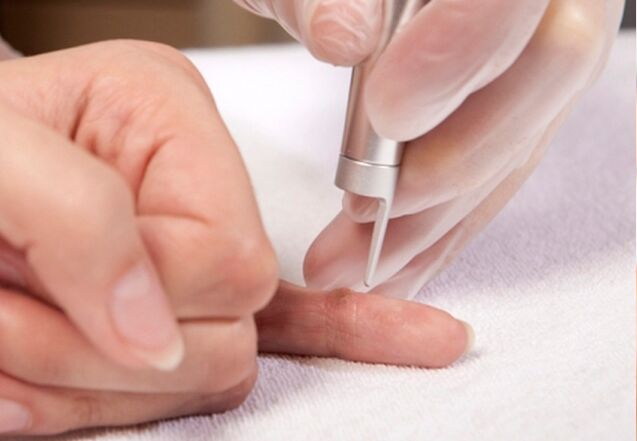Warts are nothing but a non-inflammatory skin disease. The disease manifests as benign tumors on the epidermis that can reach 10-15 mm in size. There is no favorite location for this tumor, and warts may appear first on the fingers, then on the face and legs. The unsightly appearance of warts is the main reason why many women and men prefer to get rid of unwanted skin growths.
Clinical manifestations and features of the disease

Warts, known as round structures, appear on the surface of the skin due to overgrowth of the upper layer of the epithelium and the papillary subcutaneous bulb that lies just below it. Sometimes formations appear that have nothing to do with the proliferation of the epithelium, as they may appear as a result of skin infection with human papillomavirus (HPV). In any case, warts on the soles of the feet, hands and face can cause a lot of inconvenience until the development of psychological complexes, which is why it is very important to deal with them.
The size of the pimple depends on its location and type. The minimum size of the formation is 1. 5 mm and the maximum is 6 cm.
notes! Warts tend to coalesce, so the size of the papules increases significantly. Tumors are cylindrical or hemispherical, have a considerable appearance and cause inconvenience of a psychological and physiological nature.
Early in development, the papules are indistinguishable from the color of the skin, but over time, they become purple and sometimes black. Partly due to this color, warts are due to dirt, and they adhere perfectly to the rough surface of the formation. If the wart is located on the leg, the change in color characteristics will be many times faster.
What causes warts and what causes them to form?
When warts appear, the cause of development is the entry of human papillomavirus infection into the body.

Additional Information! A person can be a carrier of the virus for a long time, but since there is no pathological manifestation in the form of warts, it is not even possible to guess.
How to get the virus:
- The presence of wounds and microcracks in the skin helps the virus to get inside;
- During close contact with affected patients. Therefore, in most cases, the disease is sexually transmitted;
- Viral infection can also be caused by using an infected person's hygiene products and items;
- You can get papillomavirus in public places such as gyms, swimming pools, bathrooms, saunas;
- If the mother is a carrier of the virus, it can be passed on to the child as it travels through the birth canal.
important! To prevent infection of the infant with papillomavirus, special attention must be paid to pathological treatment during pregnancy.
Factors that lead to the development of the disease:
- Live a busy lifestyle with frequent changes of sexual partners;
- ignore hygiene rules;
- decrease in immunity. Even if a person is a carrier of the virus, strong immunity will not make the latter active;
- frequent stress;
- transfer of infectious diseases;
- chronic fatigue;
- hormone imbalance;
- vitamin deficiency;
- poor environmental conditions;
- Work involving the use of corrosive materials.
types of warts
There are four main types of tumors based on the characteristics of the wart and the symptoms that accompany it.
So, the types of warts:
- ordinary or simple;
- flat;
- senescence;
- Condyloma acuminatum.
Let's look at the features and characteristics of each type in more detail.
Features of simple warts
Characteristics of common warts include:
- The main part of the positioning is the back of the hand;
- papules from 1 to 10 mm in diameter;
- Common warts usually resolve on their own within two years and do not require special treatment.
A simple variety of warts are plantar warts.
Features of plantar warts:
- People with excessive leg sweating are more likely to develop leg warts;
- pimples are mainly located where the pressure of the shoes on the skin increases;
- At first, the papules are yellowish-gray and have a rough, uneven surface. Advanced stages of pathology are characterized by a change in color to gray, marked compaction of the affected covering, its keratinization;
- Warts on the legs are the most painful. In some cases, the development of the disease results in partial disability;
- Usually, warts on the legs appear to be single, but sometimes they can reach 5-6 in number. As the disease progresses, small plaques can coalesce to form mosaic warts.
Flat warts or juvenile warts
The main difference between the flat or young form (planar warts) is that these warts most commonly appear in children and adolescents.
Signs of flat warts:
- The papules are smooth and not more than 1. 5 mm in diameter.
- The altitude above the area near the epidermis reaches 2 mm.
- be round or irregular in shape;
- Where to locate - the outer surface of the hands, the skin of the face, the lower legs;
- papules do not stand out on the surface of the skin, not only because of their flat shape, but also because of their light color (pink, flesh-colored);
- The cause of juvenile warts is related to exposure to external stimuli. As a result, formations may appear at the site of a cut or injury to the skin.
Symptoms and characteristics of warts
Features of this type of wart, such as genital warts (genital warts), include:
- The pink growths that appear at the initial stages of pathological development gradually merge with each other, forming a growth located at the base of what looks like a leg;
- The favorite places for this type of wart localization are the genitals, both female and male;
- Genital warts are spread by contact. If the carrier has microcracks and wounds on the genitals, there is an increased risk of contracting the disease;
- Warts are characterized by growths, so you should contact a dermatologist immediately at the first signs of the disease;
- Condyloma acuminatum is fertile ground for the manifestation and development of other diseases in the groin area. As a result, lack of treatment in women can lead to the development of serious diseases such as cervical cancer.
Signs of seborrheic keratosis
Senile warts or so-called seborrheic keratosis: educational signs and features:
- characteristics of the elderly;
- It is speculated that the cause of the development of the pathology is the failure of the cells of the main layer of the skin;
- This wart is not related to HPV;
- In most cases, the manifestations of the disease affect the skin of the chest, less often - the face, neck, hands, forearms and legs;
- The multiplicity of the formation, usually the number of keratinizing elements does not exceed 20;
- Predisposition to seborrheic warts is genetically transmitted;
- The papules can be as small as 2 mm in diameter and as large as 6 cm.
The clinical appearance of senile warts depends on its stage of development and location on the body. In the early stages, these are flat spots with sharp edges, pink or yellow, covered with a crust that peels off easily. Over time, the scabs become thicker, reaching a thickness of two centimeters, and as the pathology develops, the papules take on a fungal shape and turn dark brown or even black.
The development of seborrheic warts lasted for more than ten years, but no malignant transformation of papules occurred during this period.
Treatment features of warts

What you need to know when treating warts:
- It is completely impossible to get rid of a papillomavirus infection, it stays in the body forever. The main task of the vector is to inactivate the virus and transfer it to its latent form;
- recurrent disease;
- After removal of warts on the epidermis, usually in the form of scars and scars;
- Sometimes these formations go away on their own, especially in younger patients.
important! Recognizing the first signs of warts shouldn't cause panic, and a timely visit to a dermatologist and appointment of an effective treatment will help get rid of the pathological signs and maximize remission.
Traditional methods of treating warts
notes! The course of treatment is based on the use of classical medicines and techniques, however, in the early stages of the disease clear success can be achieved with the help of traditional medicine.

Comprehensive treatment of warts involves the use of general and locally acting medications, as well as medical procedures.
Popular ways to treat warts:
- Laser pimple removal. It is considered to be one of the most effective and fastest methods without harming the skin;
- Electrocoagulation. Promote reduced growth by exposure to high temperatures;
- cryotherapy or cautery;
- Surgery. This method is rarely used.
Is it possible to remove warts with traditional medicine?
The following folk remedies have beneficial effects on the treatment of tumors:
- Celandine juice. for burning pimples;
- Celandine-based compressions and decoctions;
- Rub from dandelion juice. Lubricate the affected area at least 3 times a day;
- garlic and onion juice;
- Wormwood-based therapeutic infusion.
You can remove warts with cold procedures. Burning with vinegar has a positive effect. However, there are safety rules to follow when using vinegar or its flavors.
The appearance of warts on the skin indicates the presence of a disease in the body, so when the first signs of pathology are detected, it is recommended to consult a doctor to diagnose the disease and develop a treatment plan.


















